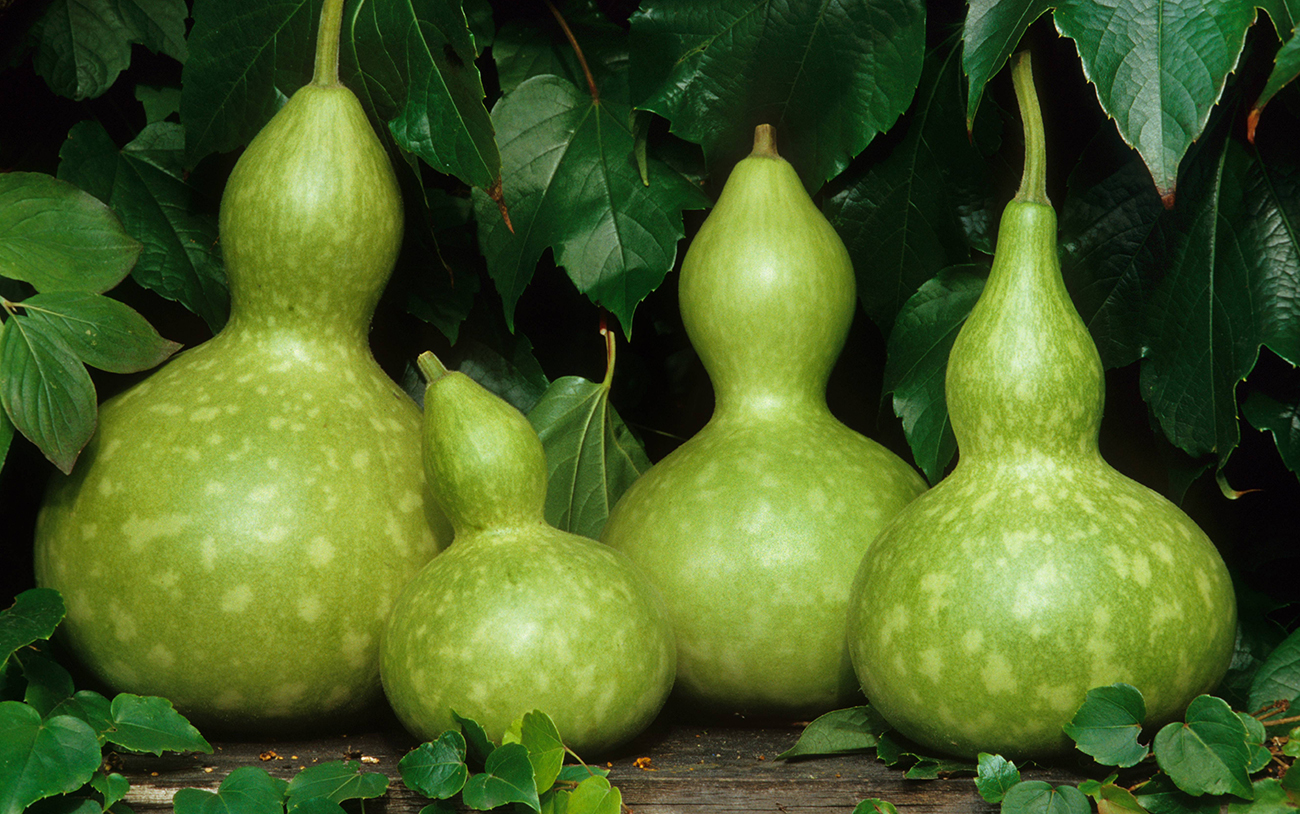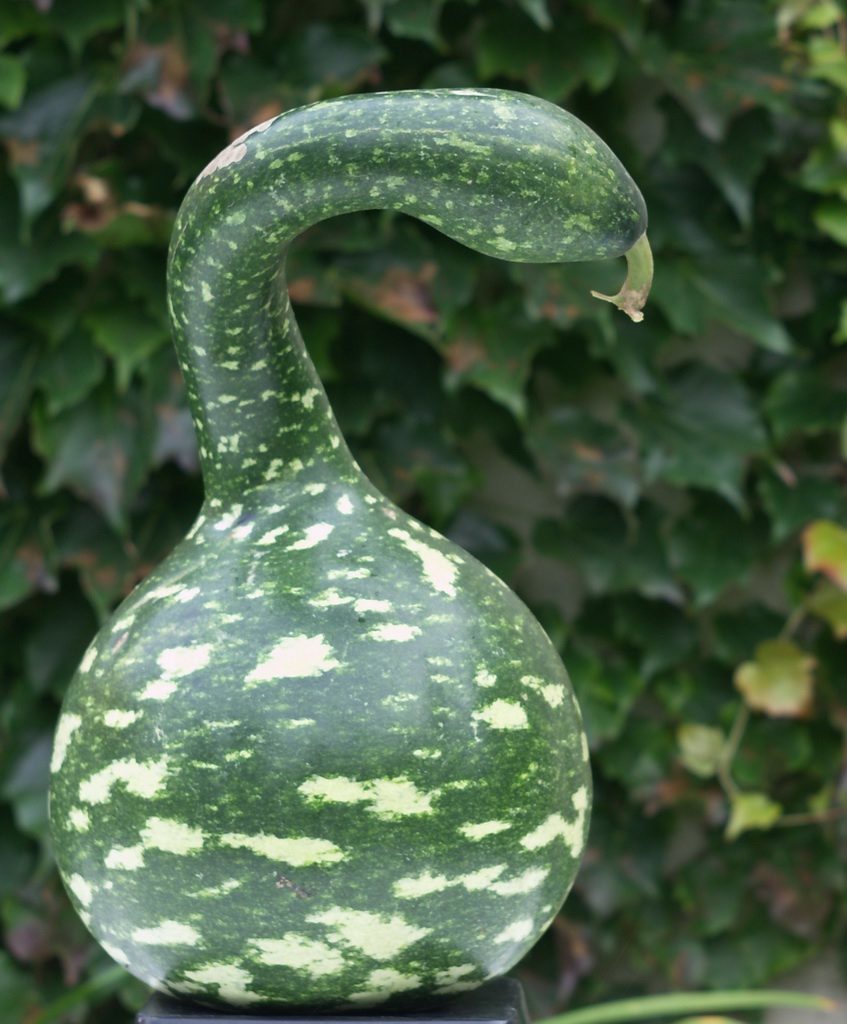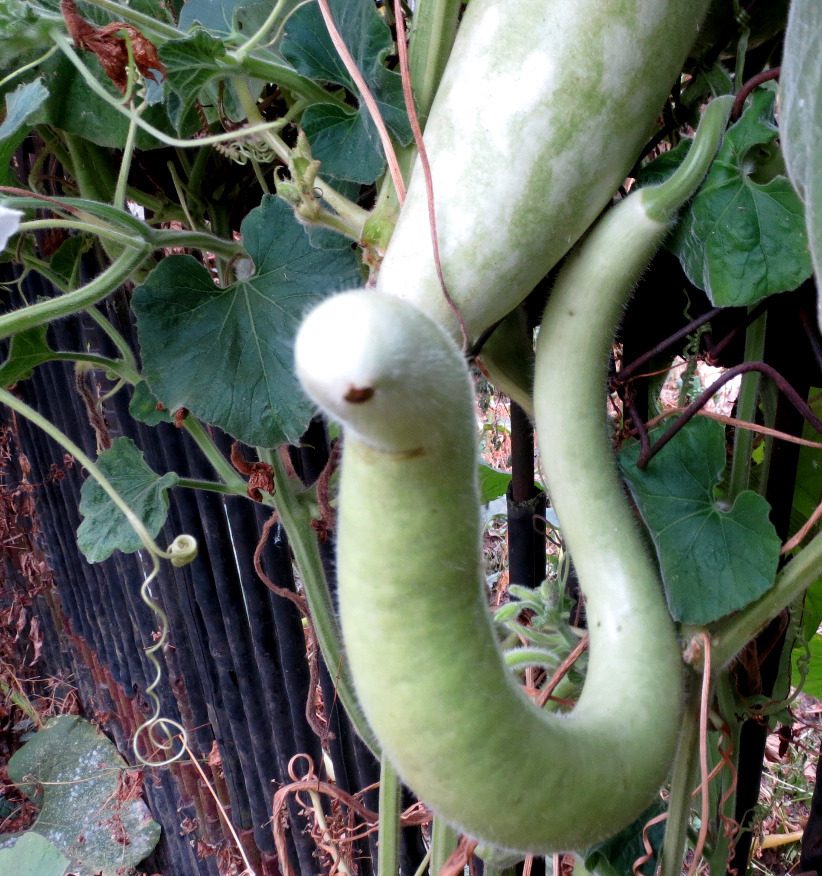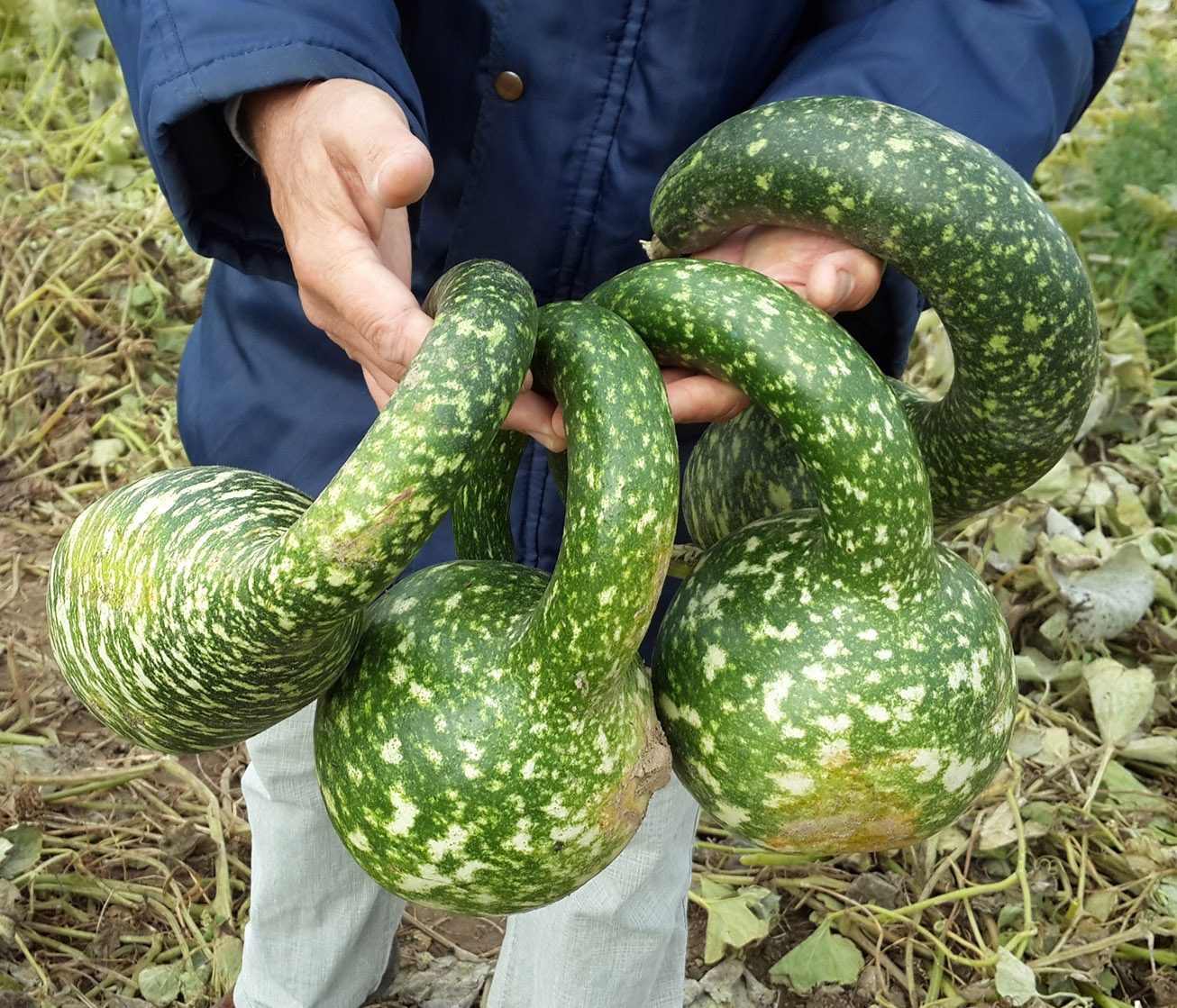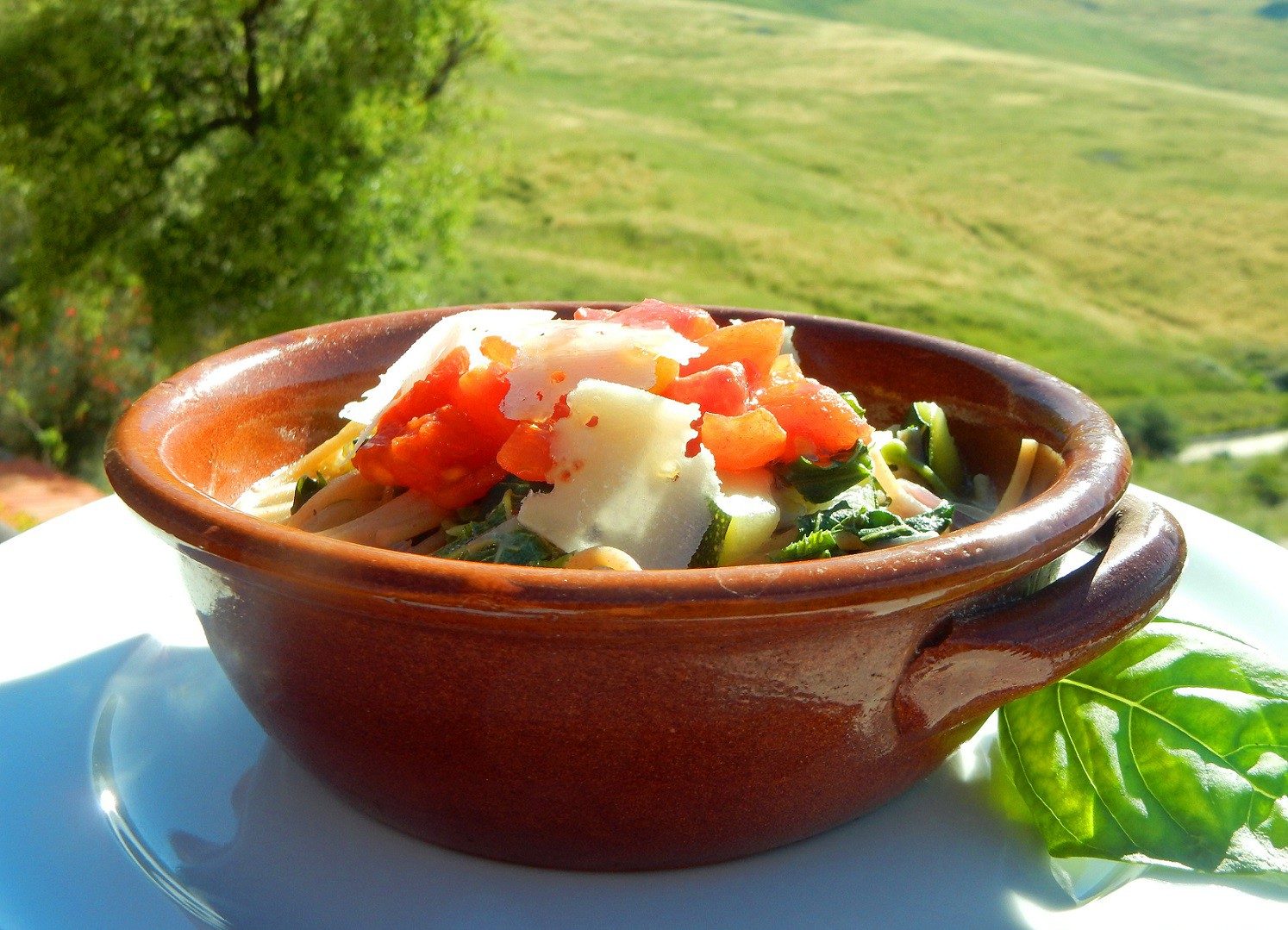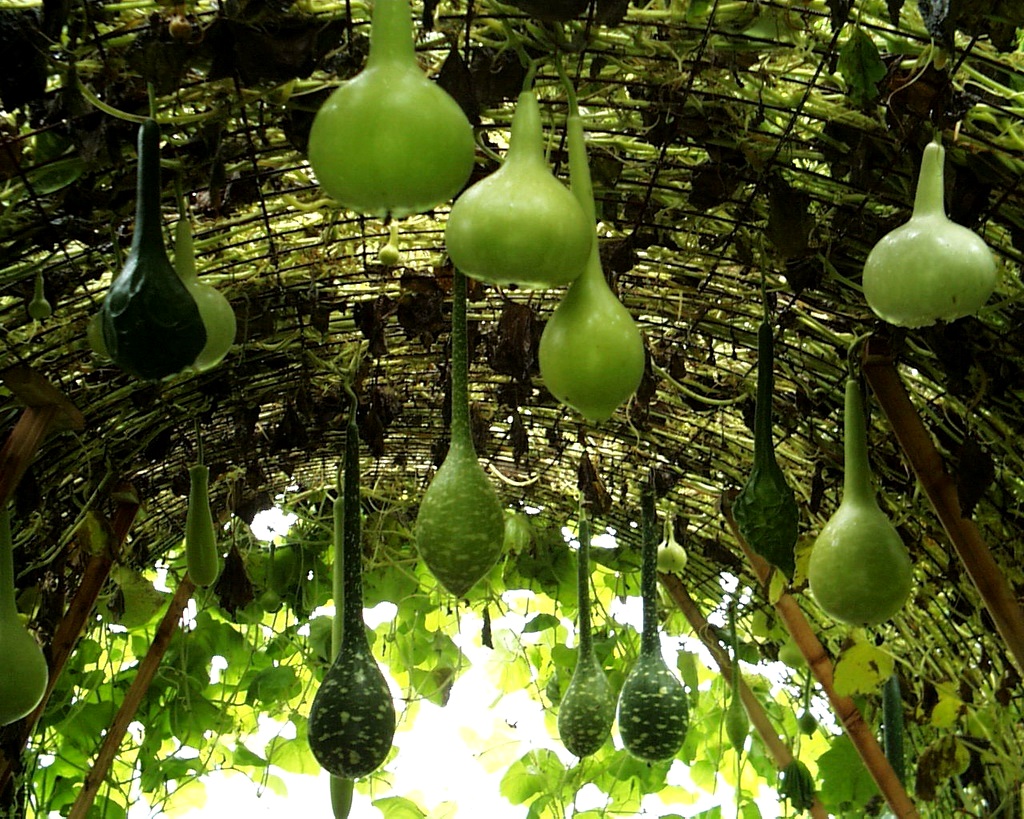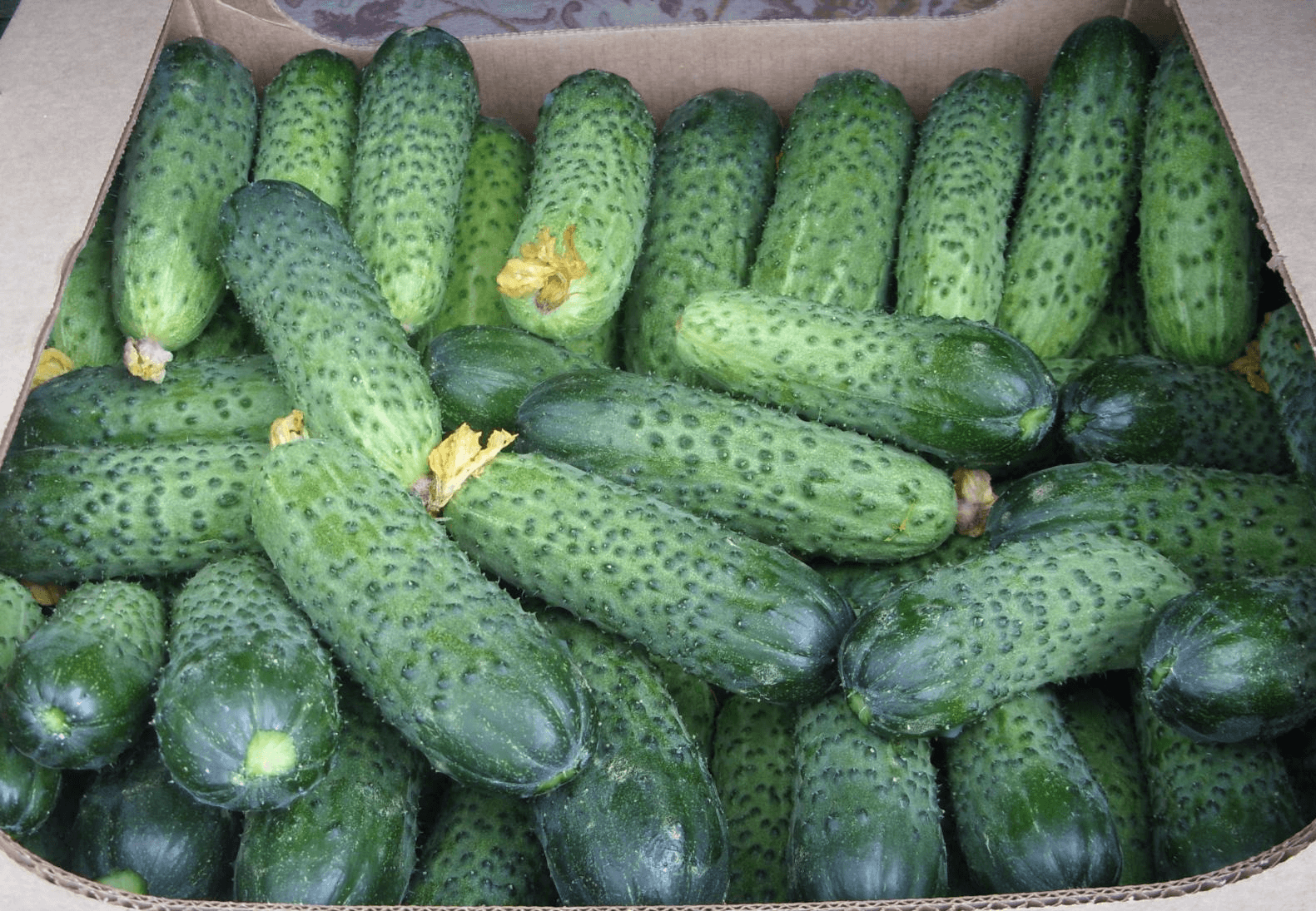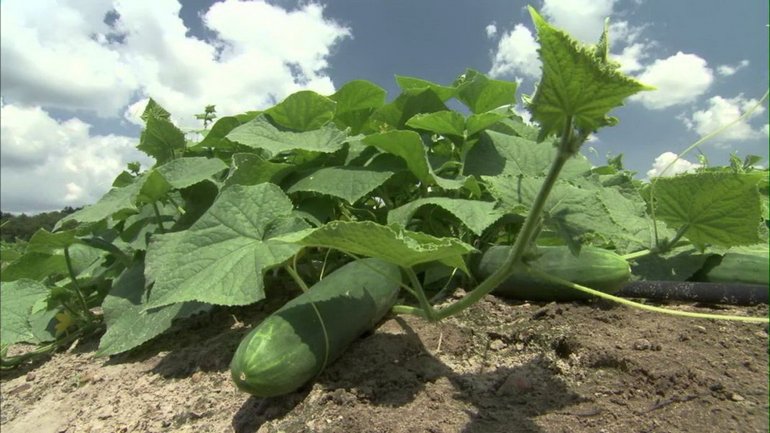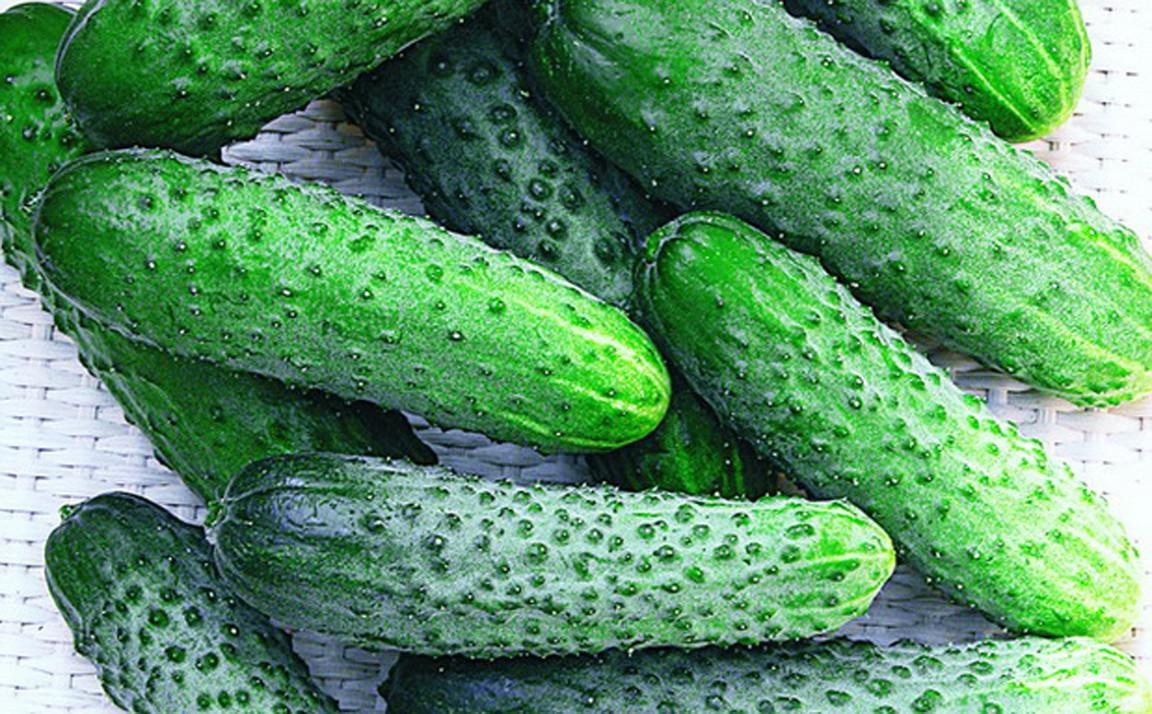Content:
Often, in summer cottages, next to the usual cucumbers, tomatoes, beds with greenery, there is an amazing plant with fruits of an unusual shape, wrapping around gazebos and fences. The name of this exotic is Lagenaria, we will find out what it is right now.
Description of Lagenaria
Lagenaria (aka Indian cucumber, Vietnamese zucchini, cucurbita, calabas, gourd, musical pumpkin) is an annual, rapidly growing herbaceous vine. This is an interesting member of the pumpkin family, allocated in a special genus Lagenaria. Long lashes of a plant are capable of growing up to 15 m per season and yield a harvest of 10-15 pumpkins of a bizarre shape and unusual color.
There are at least 7 types of Vietnamese zucchini, among them there are both edible and purely decorative purposes. Among domestic summer residents, common lagenaria is common, the fruits of which are striking in their bizarre form. Depending on the variety, pumpkins take the form of a goose, nesting dolls, snakes, etc.
Pumpkin flowers are large, fragrant, but bloom in all their beauty only with the onset of evening.
The fruits of lagenaria vulgaris are edible; they taste like the flesh of a familiar garden pumpkin. Inedible varieties are bitter due to the large amount of cucurbitacin, a poisonous substance. The Indian cucumber also possesses medicinal properties that are richer than its cousins zucchini, melons, cucumbers and other relatives. But more often liana is grown for beauty to decorate gazebos, pergolas, fences.
Cultivars and their brief characteristics
There are a lot of varieties and hybrids of Lagenaria vulgaris. They are conventionally divided into two large groups - dish-shaped (dishware) and edible lagenaria. The first varieties and hybrids have a bitter pulp and are not suitable for culinary use.
Edible species:
- Lagenaria is field-shaped. Edible light green fruits of regular cylindrical shape reach a length of 1.5-2 m and weigh up to 15 kg. It is noteworthy that long, cucumber-like pumpkins are capable of regeneration. If a piece is cut off for culinary use, the remainder quickly heals the wound and continues to grow.
- Lagenaria is serpentine. For most of its characteristics, it is similar to the poleniform. Differs in fruits wriggling like a snake.
- Cobra. The color of the fruit is deep green with light spots of indeterminate shape. The base is wide, rounded, then there is an elongated curved "neck" with a thickening - "head". The variety is valuable for its nutritional, medicinal and decorative qualities. Cobra is very picky about the temperature regime, it is grown in the south of the country.
- Goose with apples. Edible pumpkin.Outwardly similar to a cobra, but without a pronounced "head". The variety has a long shelf life without loss of taste and nutritional value.
- Swan geese. A related liana to a goose, but compact - up to one and a half meters with small leaves.
Decorative types:
- Lagenaria is clavate. The fruits resemble an ancient weapon - a mace, narrow at the stalk and greatly expanding at the bottom.
- Calabaza. The fruits resemble giant pears, but the top is narrower. It is from such pumpkins that jugs are made for storing water.
- Bottle (Bottles). Compact form - the length of the liana is usually 3 m, and the fruits grow up to 70 cm. The pumpkin shape resembles a jug: a fairly wide upper part, a constriction, a wide base.
- Turban. One of the most decorative varieties. The shape is similar to strong overgrown mushrooms, the fruits have only decorative value: when fully ripe, the "cap" takes on an orange-red color, the "leg" remains light.
How to plant lagenaria
Planting Lagenaria seeds and growing it is similar to cultivating common pumpkin varieties. The optimal sowing dates are considered April, starting from the second decade.
Seed preparation
Lagenaria seeds are soaked in a tissue napkin. For greater success, take warm melt water or add a few drops of a stimulant to the usual one.
After 3-4 days, the seed coat swells. In order for the sprout to make its way through the dense walls, the seeds are split open. The seeds are then provided with a moist, warm environment again.
After a few days, sprouts appear. The seeds are ready for planting.
Planting in the ground or seedlings
Seeds with sprouts can be sent directly into the ground or grown seedlings first. In the south, they choose the first method. In the middle lane, Siberia and the Urals, decorative and edible lagenaria is grown in a strictly seedling way.
Sprouted seeds are planted in separate seedling cups filled with standard seedling soil. Seedling care consists in regularly moistening the substrate.
A month later, the seedlings are planted in open ground. An important condition is stable heat without the risk of frost. Seedlings are placed on the south side of buildings.
At the same time, they provide support for the creeper, which is rapidly gaining power.
How to care for curcubita
The gourd is not particularly demanding for watering and feeding, but it:
- watered with warm water in the absence of precipitation, but not more often than once every 3 days;
- they are fed with slowing growth or lack of flowering with organic matter - mullein, herbal infusions.
The miracle pumpkin growing on supports shows sufficient resistance to diseases typical for congeners. However, changes in temperature and humidity can provoke damage to the vine with powdery mildew, anthracnose, and rot. The methods and means of treatment are the same as for all pumpkin seeds.
Long vines must be formed - pinch the lateral shoots when the main stem reaches 2 meters in length. To improve the quality of the crop, some of the ovaries are often removed.
Cooking recipes
Lagenaria is no less interesting from the point of view of cooking - what kind of plant it is and what it is eaten with. In most edible varieties, not only unripe fruits are used, but also flowers, leaves, young uncoarse shoots.
The pulp of cucurbita, when used in cooking, does not differ from zucchini or pumpkin, only its use is excluded fresh, without heat treatment. The limitation is due to the fact that unripe lagenaria pumpkins are bitter.
To prepare dishes from an unusual pumpkin, any recipes that use pumpkin or zucchini are suitable. In this regard, what a lagenaria is like a vegetable, and what it is eaten with, is determined by the culinary imagination.
Grafting garden crops on lagenaria
What is a lagenaria for summer residents from a practical point of view? Since the vine very quickly builds up a powerful root system, it is used as a stock for pampered crops - watermelons, cucumbers. The latter reluctantly bear fruit when the soil temperature drops below + 15 ° C, while the developed roots of the gourd actively absorb nutrients from the soil even at 7 ° C.
Agrotechnical trick - grafting on a bottle pumpkin - not only increases the cold hardiness of capricious plants, but allows watermelons to grow to large sizes, and also protects against fusarium, leading to the death of melons. A higher yield of better quality is obtained from cucumbers.
This advantage of the Lagenari is successfully used by summer residents not only of the Moscow region, but also of the wet cool North-West region, growing surprisingly sweet large watermelons.
The most suitable plants for grafting are grown from inedible (pot) varieties. The traditional grafting dates are spring, when the rootstock and scion will form cotyledonous leaves. The operation is best done in a greenhouse, since the grafted plants need high humidity and a stable temperature. There are several technologies for the operation, but they all require special skills.
Having learned in more detail what kind of plant is a lagenaria, what is its benefit, making sure that the cultivation of culture is accessible even to beginners in gardening, any summer resident will easily grow a vine with outlandish fruits on his site.
